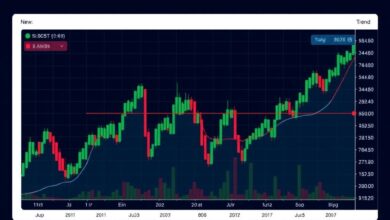Top 10 mistakes beginner investors make

The first step towards a successful financial journey is understanding the importance of a well-structured investment strategy. Many fall into the trap of chasing quick returns without considering the broader implications of their decisions. This often leads to significant errors that can derail long-term goals.
One frequent oversight is neglecting risk management. It’s imperative to assess how much risk you are willing to accept before committing funds. Diversification is not just a buzzword; it’s a fundamental principle that helps mitigate potential losses across your portfolio.
Additionally, emotional decision-making can skew judgment. Investors may react impulsively to market fluctuations, which can result in poor choices that contradict their original financial objectives. Establishing clear guidelines and sticking to them can prevent such missteps.
Finally, continuous education in finance cannot be overstated. The landscape of investing evolves rapidly, and keeping abreast of new strategies and market trends will empower you to make informed choices rather than following the crowd blindly.
Ignoring Financial Goals
Establish clear financial objectives. Without specific targets, investment strategies can become aimless, leading to poor decisions and increased risk. Define short-term and long-term goals, such as saving for retirement or funding education. This clarity helps in making informed choices aligned with your aspirations.
Utilize a goal-oriented approach. Categorize your investments based on your financial ambitions. For instance, allocate funds differently for immediate needs compared to long-term growth. This segmentation enhances risk management by ensuring that each investment aligns with its intended purpose.
Regularly review and adjust your objectives. As personal circumstances change, so should your financial strategy. Conduct periodic assessments of your goals to ensure they remain relevant and achievable, allowing you to adapt your portfolio accordingly.
Seek professional advice if necessary. Engaging with a financial advisor can provide insights tailored to your unique situation. They can assist in setting realistic goals and developing a coherent strategy that minimizes errors while maximizing potential returns.
Avoid emotional decision-making. Investing based solely on market trends or emotions can derail even the best-planned strategies. Stick to your established goals and trust the process; this discipline is key to successful finance management over time.
Overtrading and Its Consequences
Limit the frequency of your trades. Overtrading can lead to significant losses and erode your investment capital. Stick to a well-defined investment strategy that prioritizes quality over quantity.
Errors stemming from excessive trading include increased transaction costs, emotional decision-making, and diminished focus on long-term goals. Each trade incurs fees that accumulate quickly, eating into potential profits.
Monitor your activity; set specific parameters for buying and selling. Use analytical tools to assess market conditions rather than relying solely on instinct or impulse. This approach keeps your actions aligned with financial objectives.
Avoid chasing losses through impulsive trades. It’s crucial to maintain discipline and adhere to a strategic plan, even during market volatility. Emotional reactions can cloud judgment, resulting in poor financial choices.
Seek advice from seasoned traders or financial advisors who can provide insights on maintaining an appropriate trading pace. Learning from their experiences can help refine your own methods and avoid pitfalls associated with overtrading.
In summary, adopt a cautious approach: prioritize fewer, more informed trades rather than frequent transactions driven by emotion. This mindset will not only enhance your investment performance but also contribute to achieving your long-term financial aspirations.
Lack of Diversification Strategies
Implementing a robust diversification strategy is non-negotiable for anyone serious about risk management in finance. Concentrating investments in a limited number of assets increases vulnerability to market fluctuations. Instead, allocate resources across various asset classes–stocks, bonds, real estate, and commodities–to mitigate potential losses.
Consider the correlation between your chosen assets. For example, technology stocks may perform well during economic growth but could decline sharply in a downturn. Balancing with defensive sectors like utilities or consumer staples can provide stability. Aim for a mix that aligns with your investment strategy and risk tolerance.
Reassess your portfolio regularly. Market conditions change; what worked last year may not be effective today. Adaptation and rebalancing are key components of maintaining an optimal diversification approach. Use financial tools or consult with advisors to evaluate performance and adjust allocations accordingly.
Finally, educate yourself on emerging markets and alternative investments. These areas may offer growth opportunities that traditional assets do not provide. By diversifying strategically, you enhance your potential for returns while minimizing exposure to risks inherent in any single investment type.
Neglecting Market Research
Conduct thorough market research before any investment decisions. Relying solely on tips or trends can lead to misguided choices.
- Understand the Sector: Identify which industries show growth potential. Analyze reports and data to gauge performance metrics.
- Stay Updated: Follow relevant news outlets, financial blogs, and industry reports. Knowledge of current events can influence stock valuations.
- Utilize Analytical Tools: Employ software for technical analysis. Chart patterns and indicators provide insights into price movements.
- Assess Competitors: Examine other companies within the same sector. Understanding their strategies can inform your investment approach.
Incorporate this research into your overall investment strategy to enhance risk management practices. This reduces exposure to unnecessary losses while identifying opportunities for growth.
- Create a Watchlist: Focus on stocks that meet your criteria based on research findings.
- Diversify Sources: Don’t depend on a single type of information; consult multiple sources for a balanced view.
- Review Periodically: Regularly revisit your research as markets fluctuate and new information emerges.
This systematic approach will empower you to make informed choices, aligning investments with your financial goals while minimizing risks in an unpredictable environment.







